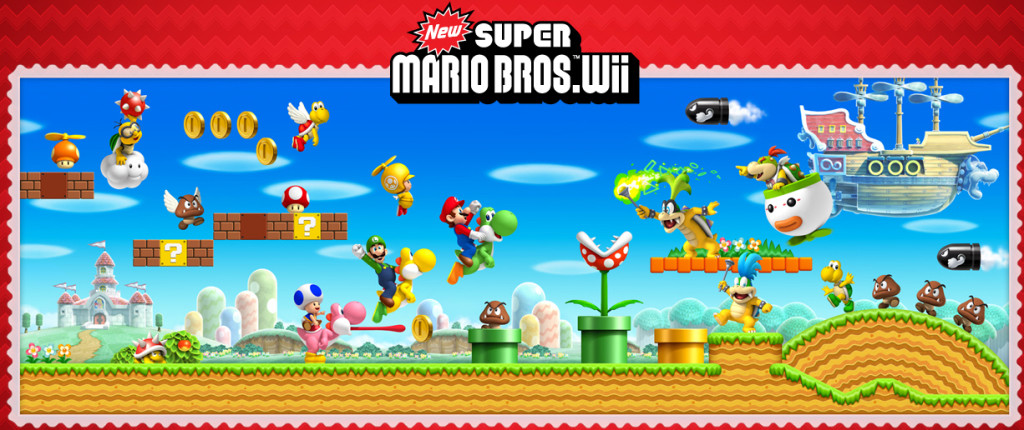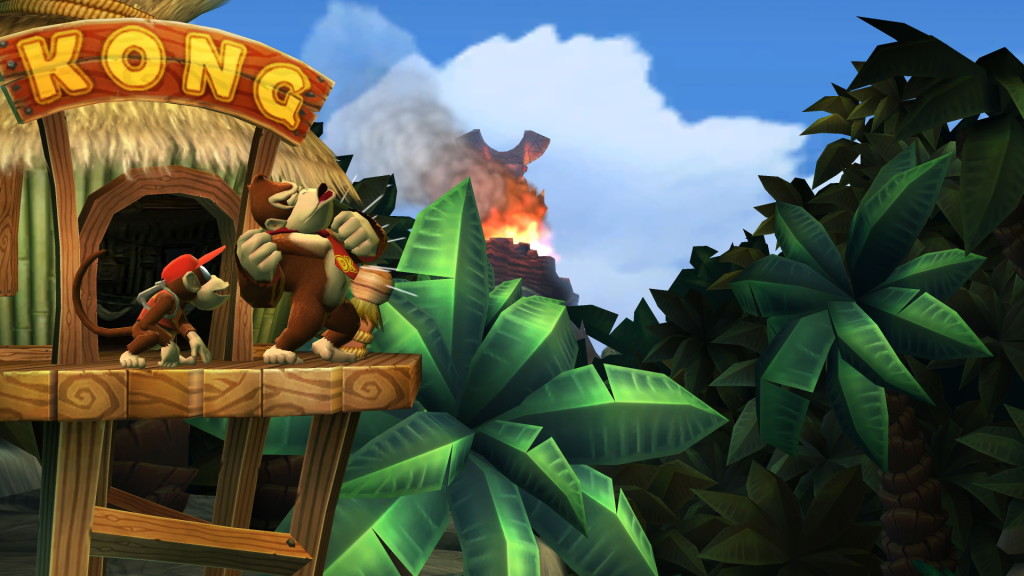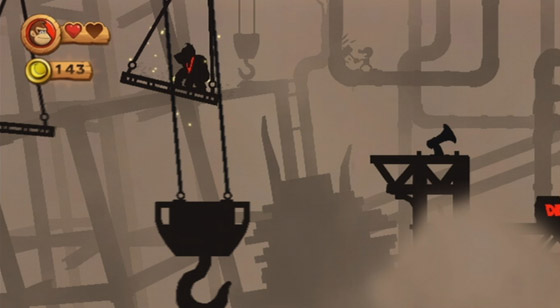In a surprise to me, Donkey Kong Country Returns is one of the most stellar, well-designed platforming experiences of the past decade. Nintendo decided, after the success of New Super Mario Bros., to revive their 2D platformers right from their graves. They would represent a combination of modern refinements (read: making the game really easy), and bring that same nostalgic combo of difficulty, trial, and error to a new generation of kids and adults alike.
Some might say they came as a result of indie platformers, but I sorta doubt it; Nintendo already had it in their mind to resurrect this dead genre, and it just happened to coincide with a recent explosion of those games in the scene. New Super Mario Bros. Wii emerged, scoring well with critics and not so well with me. I find NSMBW slow, clunky, and weird; if anything, it’s a half-formed grab at two audiences, failing at both. If you like co-op, it only works well as the ultimate “trolling” game, but plenty of games exist for that purpose.

Surely Nintendo could still make a really good platformer? Absolutely! They just needed the right license, development studio, and idea. Enter Retro Studios; most known for the Metroid Prime series, they would take their penchant for innovative design and inject that creativity into the most commonly derivative genre known to video games. Somehow, Donkey Kong Country really points to the past through its music, systems, and art design, while also showing level designs that actually push elements of the platformer style to a wonderful craft. It didn’t hurt that many Retro Studios employees loved Donkey Kong Country, and kept the elements they knew worked while adding their own.
At first blush, for example, Donkey Kong Country Returns feels like a soulless cash-in on your Rare-era DKC nostalgia. It starts the same way, with a giant banana hoard being stolen, and the physics often strike an identical manner to Rare’s 1994 game. If anything, they’ve only added a few new abilities (a ground pound taken straight from Super Smash Bros. and the ability to blow things out) and design gimmicks fitted onto the Wii (those aforementioned abilities? Shake the Wiimote! Sigh…). The music remixes a lot of David Wise and Eveline Fischer’s memorable themes while adding original compositions that evoke the same spirit, and the first half of the game rips its aesthetics wholesale from the original series game. So far, so mediocre (game-wise).

But, as per a new developer, there’s a certain element you wouldn’t expect, a focus to please gaming veterans at the same time. Since Donkey Kong himself never demonstrated a great penchant for different moves, the level design needs to compensate for a limited ability palette. Retro Studios paints in strokes of notable design gimmicks for each stage and world. At the beginning, you’ll see traditional platforming levels along with DKC’s “one mistake and you die” minecart and cannon barrel levels. All of them reveal impeccable representations of the original game’s rather stellar design – not bad, but definitely derivative.
However, Retro Studios explodes with creativity somewhere after the (repetitive) Cave world, throwing in this and that and every little challenge you’d want. Each and every stage throws long, varied sequences of platforming mastery that demand your attention, and you’ll find yourself doing some on-the-fly thinking to survive. From tidal waves to tar pits to lava, all the common platforming theme tropes add something for once, rather than just being there to be there.

Factory, the seventh world, contains some of my favorites; Donkey Kong Country loves the factory setting, for whatever reason, and Retro places tons of strange obstacles your way. From giant hammers to conveyor belts to hands, everything works in massive sequences of recognition and action. I almost like it to a freeform rhythm game, as it plays with a certain kind of rhythm that all great platformers have. The entire first stage of that world takes place in a smoggy miasma, forcing you to pay attention to Donkey Kong’s red-tie while easily rivaling any monochrome indie production. Even then, the latter stages require you to find hidden plugs that will open the last level, meaning you must observe, discover, and survive all at the same time. I love this stuff!The last area is even worse, with continuous jumping, climbing (mostly on ceilings) and dodging as the entire level collapses around you. They merely stack layers onto a template, but the template’s bare-bones nature lets them play around with it.
Retro even had the good sense to strip down some of the series’ features to focus the entire game on the sparklingly immaculate level design. Gone are the endless animal companions (much as they look cool), and only Rambi remains for a few levels of fun. The “Kong Family”, other than Cranky, disappear forever (goodbye Candy and Funky and…).
On the other hand, Retro Studios makes changes where it counts. Bosses, rather than coming down to “hit this on the head or with a barrel”, turn into gigantic puzzles with only one optimal solution. That changes throughout the course of the fight, and your quick pattern-recognition skills often save the day. Thankfully, most of them rely on visual cues, mostly indicated by color or movement. If you can recognize that and do the proper action at the right time, you win. Still, bosses often represent a stiff challenge, and may require several retries to conquer. The last boss, though his pattern made perfect sense to me, required somewhere in the vein of 30 tries because I kept making mistakes. I’m glad the game even recognizes this with feedback.
